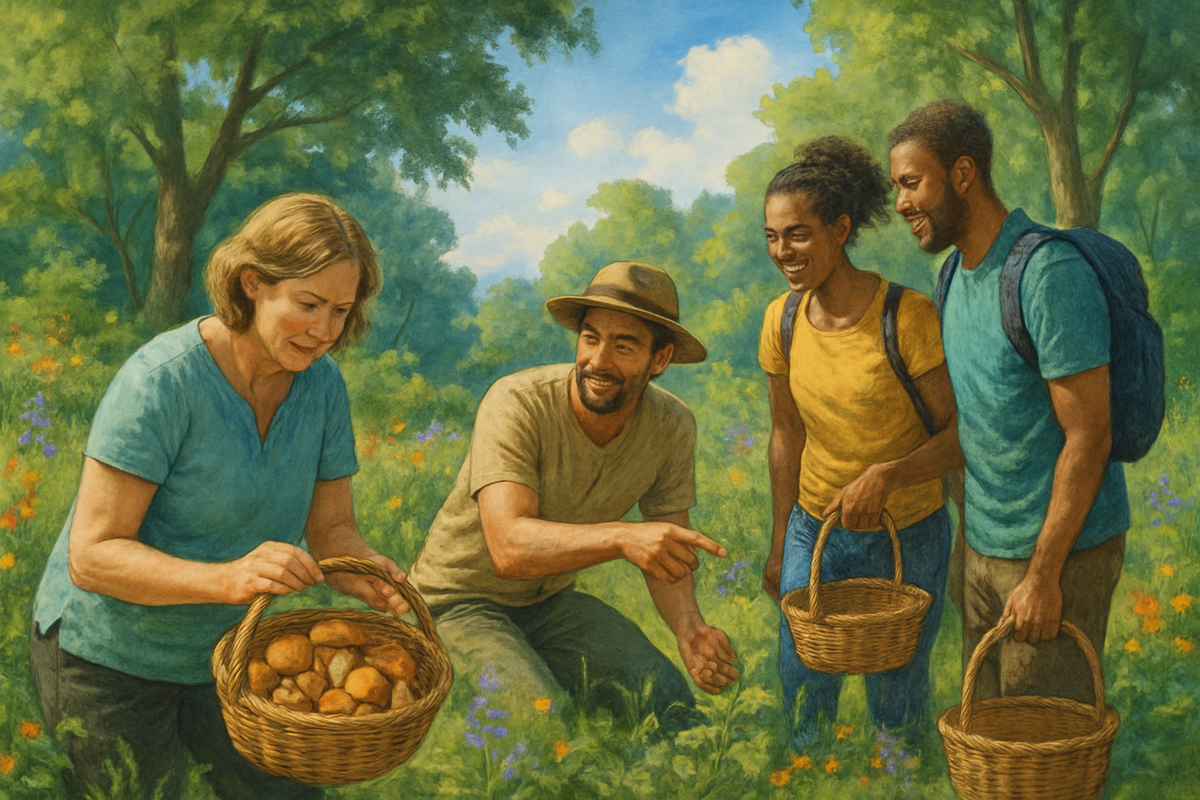The Wild Food Revolution: 2025’s Ultimate Guide to Foraging, Wild Cooking, and Nature Immersion Experiences
Step into 2025's hottest travel trend: wild food foraging, where culinary adventures meet the great outdoors. Escape the ordinary and savor nature's bounty, from Italian truffles to Oregon mushrooms—your Instagram won't know what hit it.

Welcome to the Wild Food Revolution
2025 is the year of wild food foraging and immersive culinary adventures in nature. Forget the stuffy dining room—this year, the hottest tables are mossy logs, windswept beaches, and sun-dappled forest clearings. If you’ve ever dreamed of plucking wild truffles in Italy, chasing mushrooms in Oregon’s old-growth forests, or harvesting seaweed on the Irish coast, congratulations: you’re right on trend (and probably already have more Instagram followers than your local chef).
“Wild foraging isn’t just about food—it’s about rediscovering our place in nature, savoring what the land offers, and returning home with stories that taste better than any souvenir.”
Why Wild Foraging is 2025’s Top Travel Trend
Travelers want more than a selfie—they crave transformation. Wild food adventures offer:
- Hands-on learning: Identify, harvest, and cook with edible plants, fungi, and seaweed guided by experts.
- Sustainable travel: Support local communities, protect wild habitats, and eat with the seasons.
- Unbeatable bragging rights: Sorry, Eiffel Tower. Nothing beats foraging your own dinner in a Tuscan forest.
Top Wild Food Experiences Around the World
Truffle Hunting in Italy
Follow a local truffle hunter (and their adorable, highly-trained dog) through the misty woods of Piedmont or Umbria. Learn to distinguish black from white truffles, then savor your haul in a rustic pasta feast. Pro tip: Book early—these tours fill up fast in autumn.
Mushroom Safaris in the Pacific Northwest, USA
From chanterelles to morels, the old-growth forests of Oregon and Washington are a fungi-lover’s paradise. Guided mushroom safaris teach you to spot, pick, and cook wild mushrooms (and, crucially, avoid the ones that fight back).
Seaweed Foraging on the Irish Coast
Rugged cliffs, crashing waves, and edible kelp: welcome to the wild Atlantic way. Join a local guide to collect sea lettuce and dulse, then whip up seaweed scones on the beach. It’s more delicious than it sounds—promise!
Berries & Wild Herbs in Scandinavia
In Sweden, Finland, and Norway, foraging is practically a national sport. Wander birch forests for cloudberries, blueberries, and wild herbs, then picnic like a Viking (horned helmet optional).
How to Book the Perfect Wild Food Adventure
Ready to leap into the wild? Here’s your playbook for a seamless, Instagram-worthy journey:
- Flights & Packages: Score the best deals on flights and complete adventure packages with Trip.com—perfect for bundling flights, hotels, and experiences in one click.
- Top Tours & Experiences: Curated foraging tours, wild cooking classes, and edible plant walks can be found (and compared) on WeGoTrip and Tiqets. Book early for peak mushroom and truffle seasons!
- Stay Connected: Nature is wonderful—until you need directions, translation, or to upload that perfect foraging selfie. Don’t risk roaming fees: grab an international eSIM from Yesim for seamless data in 190+ countries. Read their latest guide to essential travel add-ons for foraging adventures here.
- Airport Transfers & Local Rides: Book hassle-free transfers from the airport to your eco-lodge with GetTransfer or Intui Travel.
- Luggage Storage: Stash your bags safely while you wander the woods with Radical Storage.
- Car Rental: Renting wheels for a rural adventure? Find deals at Qeeq.
- Travel Insurance: Forage with peace of mind—protect your trip (and toes) with Ekta.
What to Expect: Your Wild Food Adventure Checklist
- Expert guides: Most tours are led by passionate locals—some are botanists, chefs, or reformed mushroom fanatics.
- All-weather gear: Waterproof boots and a good hat are your new best friends.
- Tasting sessions: Most experiences end with a wild-cooked meal—think truffle risotto, mushroom soup, or seaweed bread.
- Small groups: Foraging is intimate. Expect 6–12 people, plenty of hands-on learning, and new friends who also love getting muddy.
Sustainable Foraging: Travel with Purpose
Wild food travel is about giving back as much as you take. Choose tours that:
- Follow ethical foraging guidelines (never pick endangered species!)
- Support local conservation and community projects
- Limit group sizes and minimize impact on fragile habitats
Ask guides how your booking supports the region, and always leave the land better than you found it. (Bonus: you’ll feel virtuous, and Mother Nature might reward you with an extra truffle.)
Combining Wild Food with Seamless Travel
Make your foraging journey effortless by bundling essentials:
- Flights + Hotels + Experiences: Book all-in-one at Trip.com.
- eSIM/Connectivity: Stay online with Yesim.
- Transfers & Storage: Use GetTransfer and Radical Storage.
- Insurance: Don’t skip Ekta for comprehensive travel coverage.
Tip: Download all booking confirmations and foraging maps to your phone before you head out—just in case the wild is a little too wild for WiFi.
Expert Tips for First-Time Foragers
- Book in advance: Wild food tours are limited and seasonal—peak dates can sell out months ahead.
- Pack light, pack smart: Waterproof boots, a reusable water bottle, and a compact backpack are essential.
- Ask questions: Your guide loves to geek out on plants—let them!
- Respect nature: Only pick what you’ll eat, and leave rare finds for future explorers.
Ready to Taste the Wild?
The wild food revolution is more than a trend—it’s a movement. Embrace it with curiosity, respect, and an appetite for adventure. From truffle-laden hills to seaweed-strewn shores, 2025 is your year to eat, explore, and connect with nature like never before.
Want more adventure and wild food wisdom?
Subscribe to our blog for fresh stories, expert tips, and exclusive foraging guides.
Only subscribers may read and write comments—subscribing is free, for now!




